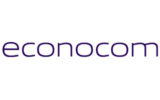Data centers: the GreenOps blind spot
Following on from FinOps, the GreenOps approach aims to reduce the wasting of resources used by information systems, particularly in the cloud. But by focusing primarily on energy consumption during use, the concept remains incomplete, omitting the environmental impact of other phases in the equipment life cycle, as well as the components of the buildings that house them: data centers.
FinOps and GreenOps: streamlining cloud use
The cloud brings with it the promise of reduced infrastructure costs compared with on-premise IT infrastructure. In practice, however, many companies use more resources than they actually need, resulting in significant cost overruns.
In this context, the FinOps approach involves monitoring and optimizing cloud computing costs, in order to match cloud usage to needs, and the cost incurred to the value it provides. This approach must be adopted both in the Build phase, to control the costs of new invoices, and in the Run phase, to optimize costs on an ongoing basis and avoid drift over time.
The GreenOps concept is an extension of the FinOps approach. Its aim: to identify unused or under-used IT resources, in order to optimize their use and reduce the cloud’s environmental footprint. Some companies have broadened the approach: closely linked to the worlds of FinOps or ITAM (IT asset management), GreenOps is gradually becoming an operational model that encompasses all efforts to control costs, while reducing the environmental impact of all the organization’s IT infrastructures, whether hosted internally or in the cloud. According to analyst firm Gartner, 50% of CIOs should have performance indicators relating to the sustainability of their IT by 2025.
The limitations of GreenOps
GreenOps is a recent concept, so it’s hardly surprising that its scope is still variable, and that no consensus has yet been reached. In most definitions of GreenOps, the emphasis is on the phases of equipment use, and therefore on energy consumption and the consumables used. While this data is of course fundamental, this approach falls well short of calculating the environmental impact of digital technology.
It is essential to take into account the entire life cycle of the equipment, from the extraction of the raw materials needed to manufacture IT equipment through to its recycling. So, alongside consumption indicators for the use phase of IT equipment, indicators for the manufacturing phase (extraction of raw materials and their transportation), the transportation phase (to the user) and the end-of-life phase (processing, recycling…) need to be taken into account to effectively assess the real environmental impact of the digital chain.
Beyond GreenOps, sustainable IT
While there are many disparities between the various definitions of GreenOps, they all have one thing in common: the systematic absence of any consideration of the entire lifecycle of the data center itself, as a building and the equipment (IT, cooling, etc.) housed within it. And yet, its location, design and urbanization have a significant environmental impact.
In other words, beyond the contributions of GreenOps, it now seems essential to adopt a more global approach to digital responsibility. According to the French Institut du Numérique Responsable (Green IT institute, INR), this is a continuous improvement approach aimed at reducing the environmental, social and economic impact of digital technology.
Applied to data centers, it provides companies with a methodology and indicators for reducing the environmental footprint of their data center construction, operation, maintenance and end-of-life projects: reduction or avoidance of environmental impacts starting from the choice of land, environmental impact assessment of the data center starting from the design phase, reuse of premises previously dedicated to other uses, equipment with a low carbon footprint label, and so on.
In all cases, it’s a question of adopting reference methodological frameworks such as the environmental assessment reference framework for data center hosting and cloud services, and standardized indicators (PUE, WUE, REF, etc.) to implement a responsible digital approach. And above all, not limiting ourselves to the carbon indicator alone, which is useful but insufficient to reflect all the environmental impacts of the digital sector.
By Georges Ouffoué, Head of Innovation, APL Data Center.




















